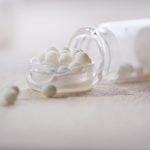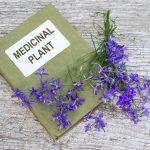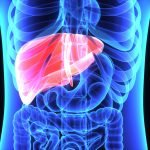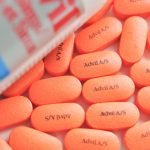The IBS Within the IBD
Gary Weiner, ND, LAc
In the January 2014 issue of NDNR, I argued that naturopathic primary care for patients with inflammatory bowel disease (IBD) was where “the rubber meets the road” in our medicine.1 I made a plea for our treatment strategy to have enough “traction” to hold IBD patients securely in a healing process, lest they flee care due to IBD’s bumpy road of exacerbations and remissions. One strategy giving the treatment wheel its needed traction and to help guide decision-making is a clinical grasp of the overlapping nature of irritable bowel syndrome (IBS) and IBD. Understanding what (besides the patient) needs to be treated can help prevent the unnecessary escalations of conventional treatment that occur when clinicians so easily mistake IBS manifestations for those of IBD – or, when they fail, if you will, to get the IBS out of the IBD.
One, or Two Diseases?
In general, we continue to see IBS and IBD represented as separate entities with no intrinsic relationship2: IBD is described as a heterogeneous group of disorders that feature various forms of mucosal and/or transmural intestinal inflammation, while IBS is characterized as a “functional,”3 if not an etiologically illusive, bowel disorder without detectable structural abnormalities or pathology. However, evidence has accumulated suggesting “shared pathophysiologic mechanisms” between IBS and IBD, including altered mucosal permeability, interaction between luminal flora and the mucosal immune system, persistent mucosal immune activation, alterations in gut motility, and the role of sustained life stressors in symptom modulation.4
Rather than being viewed as purely “functional,” or a diagnosis of “exclusion,” IBS is now appreciated for containing an inflammatory component that, like IBD, activates the immune system, albeit with a much milder intensity. The transition between mild immune activation and intense gut inflammation has been proposed to occur on a continuum, making the setting of an arbitrary threshold between IBS and IBD misleading.5 Moreover, it is no longer useful to think of IBS as a purely functional motility disorder, when it has become clear that inflammation-induced neuroplasticity contributes to disrupted motility in quiescent IBD and in functional gastrointestinal disorders.6
Supporting the continuum model is the fact that IBD patients often have a history of IBS symptoms. One study showed that the prodromal periods in Crohn’s disease (CD) and ulcerative colitis (UC) were 7.7 and 1.2 years, respectively, with IBD patients presenting with symptoms of abdominal bloating, diarrhea, excessive gas production, and stomach pain before the IBD manifested as acute symptoms.7 This would suggest that many IBD cases start out as IBS.
At the other end of the continuum, IBD cases in complete remission often present with IBS symptoms, including constipation and bloating.8 Persistent IBS-type symptoms are found in 1 in 3 patients with quiescent UC, ie, no evidence of disease activity.8 Some are now postulating that etiologies of both UC and IBS are related to enteric nervous system dysregulation, a disrupted microbiome, low-grade mucosal inflammation, and activation of the gut-brain axis that are common to both.9 CD displays similar IBS manifestations in clinical remission, estimated at 43% of those patients studied.10 These findings seem to suggest that, given genetic and environmental conditions, IBS may lead to IBD, which in turn can produce more IBS (functional bowel symptoms in the absence of a “lesion”), in a vicious cycle of coexistence.
A Unifying Link – Dysbiosis
Not surprisingly, microbiome disturbance is one of the key links between IBS and IBD, and is the subject at the center of IBD discussions as we consider fecal transplants, helminthic therapy, colostrum, pre-, pro-, and anti-biotics as tools used to correct a microbiome gone awry. While naturopathic doctors have forever excelled in the multifactorial treatment of functional as well as lesional bowel problems, focusing on diet, stress, hormones, psycho-emotional patterns, lactose intolerance, parasitic, yeast, and bacterial dysbiosis, pancreatic insufficiency, and hypochlorhydria – or to put it succinctly, tolle totum – some clinicians and researchers have now focused us on small intestinal bowel overgrowth (SIBO), a particular variant of dysbiosis, with a focal impact on the development and treatment of IBS. Dr Mark Pimental, joined by Drs Steven Sandberg-Lewis and Allison Siebecker, are showing us that SIBO could likely be, as Pimental writes, the “primary cause of IBS.”11 Treating the SIBO in IBS patients seems consistent with the most basic principle of tolle causam when we observe these patients thrive after their microbiome gets tuned-up and toned-down with the appropriate antimicrobial strategy along with dietary and prokinetic support. It is remarkable how many IBS cases are resolved in this way, though controversy surrounds bold conclusions about its centricity to all cases of IBS.12
Does SIBO Play a Role in IBD?
If SIBO plays a central role in IBS, what about IBD? When I started testing for SIBO in 2013, I was startled by the impact that SIBO treatment had on my IBD patients. The improvement I observed in these IBD patients clarified just how much IBS there was in IBD. As a product of this realization, I was sensitized to the fact that even if SIBO was absent and we were looking at other causes of dysmotility in an IBD case besides the IBD itself, there might still be some IBS in those patients (ie, bowel dysfunction not caused directly by the IBD, or SIBO, that may be “within” the IBD and not of it). Notwithstanding the fact that there are other causes of IBS besides SIBO, the fact that IBD patients so often improved as a result of treating the SIBO prompted me to ask the following: If SIBO is responsible for so many cases of IBS, and IBS often precedes IBD, then could SIBO be related to the development of some of the IBD?
That may well be a grandiose notion, as it is not supported by studies. The CD research shows only that CD patients are predisposed to develop SIBO (due to the fistulae, strictures, and inherent motility disturbances in CD) and that SIBO symptoms (diarrhea, constipation, abdominal pain, bloating) may give an impression that CD symptoms are exacerbated. The conclusion in limited studies is not that SIBO causes CD, but rather that SIBO represents “a frequently ignored yet clinically relevant complication” of CD that can mimic symptoms of acute flare.”13 As a clinician, it is important to understand which symptoms are due to the CD, and which are due to other factors not directly associated with exacerbation of the disease.
With regard to UC, one study14 showed that, compared with controls, UC patients displayed elevated cytokines, lipid peroxidation, and low reduced glutathione, and that all of these findings were strongly correlated with delayed transit time and SIBO. However, the conclusion, as with the CD study, was not that SIBO causes UC, but rather that inflammatory activity – represented by increased cytokines and decreased antioxidants – resulted in oxidative stress that caused delayed motility and led to SIBO.14 Pimentel examined whether the different gas patterns on lactulose breath tests coincided with diarrhea and constipation symptoms in IBD.15 In a retroactive study, breath-tested IBS subjects were compared and contrasted to IBD patients. It was found that methane gas production was “almost non-existent” in predominantly diarrheal conditions of CD and UC, and that it was more prevalent in IBS than in either CD or UC.15
SIBO clearly exists in some IBD patients as part or all of what is causing their IBS, and treatment of the SIBO may favorably alter the expression of bowel symptoms in these cases. I have seen this enough times to conclude that selective treatment of SIBO in IBD has 1) contributed to breaking cycles of symptom expression by taking the IBS out of the IBD; and 2) at times appeared to affect the progression of the IBD itself, likely through the treatment’s alteration of the microbiome. It is not surprising to note, when reviewing research on the use of the antibiotic, rifaximin (the standard treatment for SIBO), that its use resulted in induction of remission in CD (up to 69% in open studies and significantly higher rates than placebo in double-blind trials) and UC (76% in open studies and significantly higher rates than placebo in controlled studies).16 There is even recent research showing rifaximin as “protective” in IBD via the mechanism of human pregnane X receptor activation.17
The Value of Dichotomy – Discerning IBS vs IBD
Even if IBS and IBD exist on a continuum, there is value in maintaining a division between them. Both IBS and IBD include altered and irregular bowel habits, diarrhea, constipation, and abdominal pain. The pain and discomfort of both IBS and IBD can present as cramping, aching, or bloating, though I do associate frank distension as more of an IBS symptom than an IBD one. Both IBS and IBD display bowel urgency and frequency, or constipation, and both can feature “ineffectual” stooling or mucus (though I see mucus more in IBD). When these common symptoms are presenting, it may be difficult to know what you are observing along the IBS-IBD continuum. This difficulty is compounded by IBD medications that can control inflammation (or not), thus masking the picture, but also irritate the bowel.
What is unique to IBD is often the degree or virulence of the presenting urgency and frequency of bowel movements during acute exacerbation. When extreme, a patient might complain of as many as 10-20 movements in a day. The hematochezia seen in IBD is generally not part of IBS, unless there are active hemorrhoids. And weight loss, fever, and the host of extraintestinal manifestations of either CD or UC – including joint pain, anorectal lesions, mouth ulcers, as well as various skin, eye, and associated hepatobiliary diseases – do not appear with IBS. Nor does the fistulization of CD appear in IBS. Nocturnal bowel symptoms (mainly pain and urgency) are not typical IBS symptoms, but are very common in IBD and are representative of activity on the IBD side of the spectrum.
IBS, while not having a known mechanism leading to particular extraintestinal manifestations, does, however, have a high correlation with headaches, rheumatologic, and genitourinary symptoms such as night frequency and urgency, dyspareunia, sexual dysfunction, and sleep-related disturbances. In fact, epidemiological studies show comorbidities in IBS patients for a lot of what have been considered the “functional” disorders: fibromyalgia syndrome, chronic back pain, chronic pelvic pain, chronic headache, and temporomandibular joint (TMJ) dysfunction, which exist in approximately half of all patients with IBS.18 These should not be confused with the extraintestinal manifestations that are often exacerbated with IBD flaring.
CD causes growth retardation in children, which would not be seen in IBS. The nutritional deficits, weight loss, and failure to thrive, that are seen in acute IBD, are not manifestations of IBS. Nor does IBS feature the strictures and bowel obstruction seen in CD, though both can feature constipation. The inflammation of IBD can cause dysmotility, and also SIBO, which then produces symptoms. Methanogen overgrowth is highly correlated with constipation, and the appearance of constipation in IBD may be reflective of SIBO; however, constipation can also occur due to stricture, obstruction, or acute IBD inflammation. Indeed, the constipation of IBS and IBD are difficult to differentiate without the help of laboratory assessment.
In mild-to-moderate IBD with effective allopathic management, consider that symptomatology may be related more or less to IBS rather than IBD – or to other functional considerations, such as side effects of GI or other medications, or other allergic, psycho-emotional, and neuroendocrine factors. Do not make assumptions that all exacerbations of bowel symptoms are produced by the IBD. Look for the red flags before drawing the conclusion that your IBD patient’s current exacerbation of confusing symptoms that overlap with IBS are actually manifestations on the IBD side of the continuum. Examples include weight loss, nocturnal symptoms, blood mixed with the stools, intense pain, symptoms of intestinal obstructions, and extraintestinal manifestations connected to IBD.
Tools for the Teasing
Teasing out IBS from IBD is no easy feat. The patient’s symptoms guide you in conjunction with what is expected given the patient’s medical history. Know the staging of the patient’s IBD, including the medical diagnosis, location, and severity of the disease. This is discerned from medical records or through coordination with a gastroenterologist. If the IBD is stable, it may be that current symptoms are explained through the IBS end of the continuum. Or, it may be that IBS and IBD symptomatology are coexisting. If there is no recent staging, you may have to initiate the process of coordinating care so that information can be obtained. Use history to tease out the common symptoms from the patient, and identify manifestations that point toward one end of the continuum or the other. Then use laboratory evaluation to help you make clinical decisions and construct a treatment plan:
Fecal calprotectin (FC) is a calcium-binding heterodimer that is abundant in the cytoplasm of neutrophils. Inflammation causes neutrophil activation, which results in FC release proportionate to the degree of inflammation.19 This test is the clinician’s best friend during critical periods between gold-standard surveillance procedures, such as colonoscopy, as a highly sensitive way of differentiating IBS and IBD. To distinguish between IBS (“non-organic disease”) and IBD (“organic disease”), the FC cut-off of 50 µg/g returned a sensitivity and specificity of 88% and 78%, respectively, for IBD.19 FC displayed up to an 87% negative predictive value to exclude IBD, and cut-offs less than 250 µg/g had a 90% sensitivity to determine remission of IBD. A negative FC can suggest IBD in remission, thus ruling out active IBD, and sparing most people with IBS from requiring invasive investigations such as colonoscopy.20 When treating IBD patients, whether they are on medications or a naturopathic treatment plan, or both, the FC will indicate whether the IBD is active, with a high degree of reliability, correlating significantly with endoscopic disease activity.21 I use this test frequently to tease out whether I am looking at the IBS within the IBD, rather than the IBD alone. A negative FC does not mean the patient is cured of IBD, rather that it is likely quiescent and you are looking at the presenting symptoms at the IBS end of the IBS-IBD continuum, to be treated accordingly. If the FC is elevated, with symptoms consistent with IBD, you may regard this as flaring IBD and treat accordingly. If you have a patient on prednisone and the FC remains elevated, you are often looking at prednisone resistance, which will further guide your interventions and advice regarding care. Implementing naturopathic therapies while following the patient’s FC allows you to track the degree of mucosal healing that is likely occurring. However, IBS symptoms may still present concomitantly that need to be addressed.
Stool lactoferrin (SL) is an iron-binding protein covering many mucosal surfaces. SL increases significantly with infiltration of neutrophils in the intestinal tract. The sensitivity of SL in IBD approaches 80% when compared with IBS, which is similar to FC and better than C-reactive protein (64%).22 Similar to FC, SL provides a valid method for discriminating between inflammatory and non-inflammatory bowel disease.23
Anti-CdtB and anti-vinculin antibodies is a serum test that can further tease out the IBS within the IBD, providing insight into etiology. Cytolethal distending toxin B (CdtB), produced by bacteria that cause acute gastroenteritis, cross-reacts with the cytoskeleton protein, vinculin, to produce an IBS-like phenotype. These biomarkers tend to be elevated in IBS-D, compared to non-IBS subjects, hence might be helpful in distinguishing IBS-D from IBD in the workup of chronic diarrhea24 or in identifying a predisposition to IBS (in your IBD patient). I have used this test to confirm that I am looking at IBS phenomena when treating IBD patients.
C-reactive protein (CRP) is considered an important protein in acute inflammation. Secreted by hepatocytes, CRP maintains a low level of circulation in healthy individuals (<1 mg/L), but sharply increases (even reaching up to 350-400 mg/L) when there is acute inflammation induced by IL-6, TNFα, and IL-1β. With a short half-life of 19 hours, CRP increases rapidly with acute inflammation, and also sharply decreases.25 However, while CD is associated with a strong CRP response, UC has a very modest or even absent response, which is important to know when you use it to discern what you are observing in a case.25 Consider CRP a useful biomarker to follow when it is elevated in acute phases of CD (not UC) to track success or failure of therapies. While less sensitive then FC and SL, it is nonetheless easy to obtain a serum sample, and results are often available in 24 hours to help confirm that you are looking at predominantly CD symptoms (if there is difficulty distinguishing them from IBS).
Erythrocyte sedimentation rate (ESR) indicates sedimentation speed of red blood cells in plasma, which reflects degree of inflammation. Conditions such as anemia, polycythemia, and thalassemia also affect ESR,26 which must be factored in, as many IBD patients are anemic due to blood loss, poor nutrient absorption, or malnutrition. Compared with CRP, ESR will peak much less rapidly and may also take several days to decrease, even if the clinical condition of the patient or the inflammation is ameliorated.27
Complete blood count (CBC) can be helpful to confirm acute IBD. You will often see an increase in WBCs, anemia patterns that may include decreases in RBCs, hemoglobin, and hematocrit, and an increase in total platelets,28 also a decrease in mean platelet volume (MPV)29 and an increase in red cell distribution width (RDW).30 These markers can help you understand the role of IBD in the symptoms you are observing. IBS will not produce this pattern in the CBC (although comorbid factors could still be producing them).
Comprehensive metabolic panel (CMP) can help you tease out IBD and IBS manifestations within IBD, as acute IBD can include hypoalbuminemia (albumin <3.5 g/dL), hypokalemia (potassium <3.5 mEq/L), and hypomagnesemia (magnesium <1.5 mg/dL). You may also see an elevated alkaline phosphatase. This pattern is not seen at the IBS end of the spectrum unless there are coincidental comorbid factors.31
Stool studies are used to exclude other causes of symptoms, and may include fecal leukocytes, ova and parasite studies, and culture for bacterial pathogens, including C difficile. It is important to distinguish pathogens, potential pathogens, or manifestations of dysbiosis in stool, from positive breath tests representing SIBO.
Hydrogen and methane breath testing functions as a simple, non-invasive method for teasing out the role that IBS may be playing in IBD. The test detects hydrogen (H2) and methane (CH4) gases produced by bacterial fermentation of unabsorbed intestinal carbohydrate excreted in the breath. Results are then used to diagnose carbohydrate malabsorption, SIBO, and to measure the orocecal transit time. Malabsorption of carbohydrates is a key trigger of IBS-type symptoms, such as diarrhea and/or constipation, bloating, excess flatulence, headaches, and lack of energy.32 Results can then help determine the direction of treatment, selection of the most prudent antimicrobial therapies, and further provide insight into the symptoms of dysmotility being observed in IBD.
A Case Study
Eileen, a charismatic 35-year-old female, presented in 2014 with mild-moderate distal colitis and complaints of constant gas, bloating, and irregular bowel movements alternating between loose and mildly urgent stools, or frequent constipation with ineffectual urging. She had been managing her IBD using only a Specific Carbohydrate Diet (SCD)33 that was self-implemented in 2013. Diagnosed in 2011, she had failed trials of mesalamine (5-aminosalicylic acid), when the diagnosis was moderate-severe, and she declined stepping up to azathioprine, as recommended by her gastroenterologist to address ongoing urgency, frequency, and hematochezia. Historically, the onset of her disease had been gastrointestinal infections, treated in 2007 and 2010 after periods of travel in the Third World. She had also taken doxycycline for 2 years in her 20s for acne.
On the mesalamine, her FC had been 298 µg/g (normal <50), signaling the failure of the drug to adequately manage intestinal inflammation; however, the SCD remarkably normalized FC and improved Eileen’s bowel condition. From Eileen’s point of view, however, this was nothing to celebrate, as she unsustainably maintained remission of her more troubling symptoms (including bloody bowel movements and more intense pain) by mainly eating only 4 SCD-legal foods: chicken, ground beef, zucchini, and spinach; other foods brought on an intensification of symptoms. Like many, she was unable to progress beyond a limited phase of the diet. Consequently, her BMI dropped to 19.3, and while in an estrogen-dominance pattern for years, she was beginning to develop increasing irregularity of her menstrual cycle, in the direction of amenorrhea. This was distressing, as she was hoping to become pregnant. Her TSH was also rising, and her body temperature was decreasing.
Eileen represented a subset of patients who through the SCD are able to achieve symptomatic improvement and a decline in inflammatory markers (achieving some degree of mucosal healing) but remain unable to advance into the subsequent phases of the diet (thereby increasing the diversity, complexity, and quantity of foods, and cooking styles) without experiencing increases in urgency, abdominal discomfort, bloating, abnormal stooling, or other symptoms. Her gastroenterologist offered to recommence an oral 5-ASA drug and a topical mesalamine, as the 2 together promised greater efficacy then either alone,34 and because her disease had been localized to the left side on her most recent colonoscopy. Or, she could step up to azathioprine, which she rejected years earlier.
Assessment
Tasked to help Eileen sort through the decision-making and coordinate with her gastroenterologist, I interpreted that signs and symptoms of both IBS and IBD – along the pathophysiological continuum – were coexisting. While Eileen’s original disease was a left-sided colitis, her self-management appeared to have regressed it down to a distal and mild-to-moderate stage, but not without costs (weight loss, menstrual dysregulation, subclinical hypothyroidism, and a mild but persistent anxiety with insomnia). If you “tease out” the symptoms, Eileen was displaying more of an IBS pattern than a predictably IBD pattern. There was no blood, fever, intense abdominal pain, extreme urgency and frequency, or the nocturnal symptoms associated with IBD. Nor did we see IBD’s extraintestinal manifestations. Instead, Eileen displayed the alternation of loose stools and constipation, gas and bloating, mild anxiety with insomnia, and menstrual dysregulation, often associated with IBS. Her antibiotic history was common to both IBS and IBD, but her history of GI infections was notably a keynote for the development of post-infectious IBS (PI-IBS). She also admitted to irregular bowels since she was very young. Examining her medical records, the most recent colonoscopy showed that histologically she was in remission.
I ran an FC, which came back at <15.6 µg/g. I also ordered CDtB and anti-vinculin antibody tests, showing elevated optical densities of 3.105 and 1.58, respectively; these served as a confirmation of IBS. A lactulose breath test was ordered and demonstrated 32 ppm H2 at 120 minutes, with 0 ppm CH4 (positive for SIBO). I also ordered serum tests that were negative for ESR and CRP, and a salivary hormone test, which showed a typical estrogen dominance picture in the luteal phase of Eileen’s menstrual cycle, but also estradiol levels nearing the bottom of the reference range, and uniformly suboptimal levels of cortisol in all 4 zones of the diurnal adrenal study. Suboptimal body temperature and TSH levels pointed further to subclinical hypothyroidism.
From the foregoing findings, I concluded that Eileen’s symptoms were not directly related to an exacerbation of her IBD, but were rather signs and symptoms of the IBS at the other end of the continuum – an IBS that was either contained within the IBD, or produced by it. I shared my opinion that I did not believe that escalating up the steps of the IBD medication paradigm in the “management” of IBD was the best next move, but instead suggested that we might try to address bowel “function” in the wider context of the IBS, as well as the rest of her “whole person” presentation affecting “function.”
Treatment
Eileen’s treatment plan included many components phased over the subsequent 3 months: 550 mg rifaxamin TID for 14 days; followed by continuation of 4.5 mg [low-dose] naltrexone at bedtime (utilized for its proposed ability to increase endorphin levels and decrease proinflammatory cytokines,35 as well as for its function in supporting the migrating motor complex); a mixed probiotic formula; brush-border support with digestive enzymes and glutamine; counseling related to mindfulness-based stress reduction (MBSR); 150 mg of bovine adrenal extract with an additional 80 mg of adrenal cortex BID, and 30 mg daily of transdermal progesterone applied vaginally during the luteal phase of her menstrual cycle.
She was also given acupuncture weekly to address anxiety and to provide constitutional support. When her body temperatures were not rising to normal and she complained of cold intolerance with continued suboptimal TSH levels, I also added 16.25 mg USP thyroid. There is a high degree of correlation between IBD and thyroid problems.36 In addition, Eileen was given further dietary support, implementing SCD correctly to assure successful “phase expansion” with the foods.
Follow-ups
Three months later, Eileen’s follow-up lactulose breath test was normalized, and she reported an amelioration of all abdominal symptoms, 1-2 well-formed stools daily, and a consistent ability to expand through phases of the diet, even though it took 6 months for her to reach the later phases of the SCD that allowed her to enjoy raw fruits and vegetables, whole nuts and seeds, beans, and even occasional fried food – all without GI consequence. As in many IBD cases, it is often necessary to introduce oral medications or supplements carefully, 1 at a time, to determine tolerance. While each of the agents used appeared to add a degree of improvement in Eileen’s case, the completion of treatment with rifaximin for SIBO was the decisive turning point. After this, the patient’s symptom pattern shifted in the direction of healing, supported further by additional interventions, including hormonal augmentation. Apparent restorative alteration of the microbiome appeared to promote food tolerance, weight gain, and neuroendocrine balance, ending the anxiety pattern and insomnia.
After 6 more months, Eileen announced regularity in her menstrual cycle, rising energy, increasing body temperature, excellent sleep, and expressed the joy of being healthy and of achieving a stable pregnancy. As in many cases of IBD, getting at the IBS within it can be the starting point of stimulating the vis medicatrix naturae for the best of possible outcomes.
 Gary Weiner, ND, LAc, practices at Pearl Natural Health in Portland, Oregon, where he has developed an alternative and complementary care program for Inflammatory Bowel Disease. He graduated from NCNM in 1997 and completed a 1-year residency in family medicine. He serves as a clinical supervisor at NCNM and is on the medical advisory board of the Northwest Crohn’s and Colitis Foundation of America. Dr Weiner lives in Portland with his wife and daughter.
Gary Weiner, ND, LAc, practices at Pearl Natural Health in Portland, Oregon, where he has developed an alternative and complementary care program for Inflammatory Bowel Disease. He graduated from NCNM in 1997 and completed a 1-year residency in family medicine. He serves as a clinical supervisor at NCNM and is on the medical advisory board of the Northwest Crohn’s and Colitis Foundation of America. Dr Weiner lives in Portland with his wife and daughter.
References
Weiner G. Where the Rubber Meets the Road: Treating Inflammatory Bowel Diseases. NDNR. 2014 January;10(1):1.
Mayo Clinic. Irritable bowel syndrome. July 31, 2014. Available at: http://tinyurl.com/pxxu7ak. Accessed November 22, 2015.
Canavan C, West J, Card T. The epidemiology of irritable bowel syndrome. Clin Epidemiol. 2014;6:71-80.
Bradesi S, McRoberts JA, Anton PA, Mayer EA. Inflammatory bowel disease and irritable bowel syndrome: separate or unified? Curr Opin Gastroenterol. 2003;19(4):336-342.
Bercik P, Verdu EF, Collins SM. Is irritable bowel syndrome a low-grade inflammatory bowel disease? Gastroenterol Clin North Am. 2005;34(2):235-245, vi-vii.
Casén C, Vebø HC, Sekelja M, et al. Deviations in human gut microbiota: a novel diagnostic test for determining dysbiosis in patients with IBS or IBD. Aliment Pharmacol Ther. 2015;42(1):71-83.
Pimentel M, Chang M, Chow EJ, et al. Identification of a prodromal period in Crohn’s disease but not ulcerative colitis. Am J Gastroenterol. 2000;95(12):3458-3462.
Jonefjäll B, Strid H, Ohman L, et al. Characterization of IBS-like symptoms in patients with ulcerative colitis in clinical remission. Neurogastroenterol Motil. 2013;25(9):756-e578.
Gracie DJ, Ford AC. IBS-like symptoms in patients with ulcerative colitis. Clin Exp Gastroenterol. 2015;8:101-109.
Minderhoud IM, Oldenburg B, Wismeijer JA, et al. IBS-like symptoms in patients with inflammatory bowel disease in remission; relationships with quality of life and coping behavior. Dig Dis Sci. 2004;49(3):469-474.
Pimentel M. A New IBS Solution. Sherman Oaks, CA: Health Point Press; 2006.
Dukowicz AC, Lacy BE, Levine GM. Small intestinal bacterial overgrowth: a comprehensive review. Gastroenterol Hepatol (N Y). 2007;3(2):112-122.
Klaus J, Spaniol U, Adler G, et al. Small intestinal bacterial overgrowth mimicking acute flare as a pitfall in patients with Crohn’s Disease. BMC Gastroenterol. 2009;9:61.
Rana SV, Sharma S, Kaur J, et al. Relationship of cytokines, oxidative stress and GI motility with bacterial overgrowth in ulcerative colitis patients. J Crohns Colitis. 2014;8(8):859-865.
Pimentel M, Mayer AG, Park S, et al. Methane production during lactulose breath test is associated with gastrointestinal disease presentation. Dig Dis Sci. 2003;48(1):86-92.
Guslandi M. Rifaximin in the treatment of inflammatory bowel disease. World J Gastroenterol. 2011;17(42):4643-4646.
Cheng J, Shah YM, Ma X, et al. Therapeutic role of rifaximin in inflammatory bowel disease: clinical implication of human pregnane X receptor activation. J Pharmacol Exp Ther. 2010;335(1):32-41.
Whitehead WE, Palsson O, Jones KR. Systematic review of the comorbidity of irritable bowel syndrome with other disorders: what are the causes and implications? Gastroenterology. 2002;122(4):1140-1156.
Dhaliwal A, Zeino Z, Tomkins C, et al. Utility of faecal calprotectin in inflammatory bowel disease (IBD): what cut-offs should we apply? Frontline Gastroenterol. 2015;6(1):14-19.
Waugh N, Cummins E, Royle P, et al. Faecal calprotectin testing for differentiating amongst inflammatory and non-inflammatory bowel diseases: systematic review and economic evaluation. Health Technol Assess. 2013;17(55):xv-xix, 1-211.
D’Haens G, Ferrante M, Vermeire S, et al. Fecal calprotectin is a surrogate marker for endoscopic lesions in inflammatory bowel disease. Inflamm Bowel Dis. 2012;18(12):2218-2224.
Joishy M, Davies I, Ahmed M, et al. Fecal calprotectin and lactoferrin as noninvasive markers of pediatric inflammatory bowel disease. J Pediatr Gastroenterol Nutr. 2009;48(1):48-54.
Dai J, Liu WZ, Zhao YP, et al. Relationship between fecal lactoferrin and inflammatory bowel disease. Scand J Gastroenterol. 2007;42(12):1440-1444.
Pimentel M, Morales W, Rezaie A, et al. Development and validation of a biomarker for diarrhea-predominant irritable bowel syndrome in human subjects. PLOS One. 2015;10(5):e0126438.
Vermeire S, Van Assche G, Rutgeerts P. Laboratory markers in IBD: useful, magic, or unnecessary toys? Gut. 2006;55(3):426-431.
Thomas RD, Westengard JC, Hay KL, Bull BS. Calibration and validation for erythrocyte sedimentation tests. Role of the International Committee on Standardization in Hematology reference procedure. Arch Pathol Lab Med. 1993;117(7):719-723.
Gabay C, Kushner I. Acute-phase proteins and other systemic responses to inflammation. N Engl J Med. 1999;340(6):448-454.
Danese S, Motte Cd Cde L, Fiocchi C. Platelets in inflammatory bowel disease: clinical, pathogenic, and therapeutic implications. Am J Gastroenterol. 2004;99(5):938-945.
Kapsoritakis AN, Koukourakis MI, Sfiridaki A, et al. Mean platelet volume: a useful marker of inflammatory bowel disease activity. Am J Gastroenterol. 2001;96(3):776-781.
Oustamanolakis P, Koutroubakis IE, Messaritakis I, et al. Measurement of reticulocyte and red blood cell indices in the evaluation of anemia in inflammatory bowel disease. J Crohns Colitis. 2011;5(4):295-300.
Basson MD. Ulcerative Colitis Work-up. Updated November 19, 2015. Medscape. Available at: http://emedicine.medscape.com/article/183084-workup#c9. Accessed November 22, 2015.
Breaking the Vicious Cycle Web site. Available at: http://www.breakingtheviciouscycle.info/. Accessed November 22, 2015.
Rana SV, Malik A. Breath tests and irritable bowel syndrome. World J Gastroenterol. 2014;20(24):7587-7601.
Naganuma M, Iwao Y, Ogata H, et al. Measurement of colonic mucosal concentrations of 5-aminosalicylic acid is useful for estimating its therapeutic efficacy in distal ulcerative colitis: comparison of orally administered mesalamine and sulfasalazine. Inflamm Bowel Dis. 2001;7(3):221-5.
Matters GL, Harms JF, McGovern C, et al. The opioid antagonist naltrexone improves murine inflammatory bowel disease. J Immunotoxicol. 2008;5(2):179-187.
Messina G, Viceconti N, Trinti B. The clinical and echographic assessment of thyroid function and structure in patients with a chronic inflammatory intestinal disease. [Article in Italian] Recenti Prog Med. 1999;90(1):13-16.









